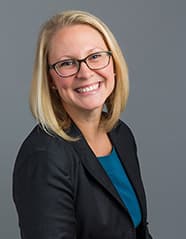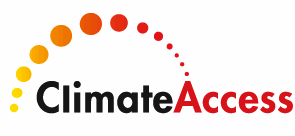Climate Access: Featured Member Questionnaire, Emily Wasley Seyller
Originally published by Climate Access
December 2, 2015

Emily Wasley Seyller
Senior Climate Risk & Resilience Specialist, Cadmus
What I’m working on now:
I’m currently supporting a series of initiatives with the White House and FEMA’s National Exercise Division on their Regional Climate Adaptation, Preparedness, and Resilience Exercise and Seminar Series. Through my support, Cadmus’ role is to identify and translate the best available national, regional, and local climate science, connections with the Nation’s top climate, economic, and social scientists, and understanding of and collaboration with existing resilience initiatives on the ground. Our end goal is to empower and enable collaboration across multiple stakeholders to enhance resilience through local hazard mitigation planning and preparedness efforts.
Why I initially started working on climate issues:
I fell in love with the environment at a very young age. I collected rocks, sand, gems, you name it, and loved being outdoors, admiring nature’s beauty while traveling with my family across Europe and the U.S. But it wasn’t until my senior year of high school when I knew I wanted to work on environmental and climate issues through my ecology class and a 2-week intensive trip I was lucky enough to go on to the Drakensberg Mountains and along the Umfolozi River in South Africa. I was in awe of the landscape, habitat, wild animals, and openness that this part of the world exuded and felt an extreme need to protect areas like this from development, climate impacts, and the continued depletion of valuable resources.
Following this realization, I decided to focus my undergraduate studies on public policy and environmental science which led me into my first job in the Washington, DC area conducting environmental site assessments on various brownfield sites in the region. While working, I applied and was accepted into GW’s Environmental and Natural Resources Policy graduate program where I focused on sustainable mechanisms to cleanup brownfields, protect the environment, and revitalize neighborhoods. When I transitioned to working at Booz Allen, I led an interdisciplinary team exploring the national security implications of climate change – so this really got me more involved in the climate risk and resilience space. I specialized in understanding how changes in our climate (e.g., higher temperatures, extreme weather events, sea level rise, etc.) can exacerbate existing stressors and further threaten our national security. Then through my work with the U.S. Global Change Research Program (USGCRP) as their Inform Decisions and Adaptation Science Program Manager, I was able to better identify the research needed to (1) adapt to these changes, and (2) evaluate the effectiveness of actions proposed to enhance resilience and not further add to the problem. This type of understanding and knowledge led me into the preparedness and risk management fields that I support today.
The climate work I’m most proud of:
I’d have to say that my climate work at USGCRP and the current projects I’m involved with through Cadmus are some of the climate work of which I’m most proud. Leading USGCRP’s Adaptation Science Interagency Working Group allowed me to connect the science providers (USGCRP partner agencies) with the users (Federal agencies responsible for delivering Agency Adaptation Plans) to inform their vulnerability assessments and development of actions needed to enhance resilience. My work with USGCRP also allowed me the opportunity to inform the President’s Climate Action Plan, Third U.S. National Climate Assessment, and other agency-specific initiatives to enhance community resilience. The work I’ve continued to be involved in with the White House and FEMA NED has given me the chance to connect with regional and local stakeholders to better understand the decisions they’re making for adaptation and the information they need to inform those decisions. It’s also given me the chance to get back into scenario planning for possible futures – something I did quite a bit of when I was involved in the climate change and national security work.
A recent and tangible accomplishment that I’m pretty proud of is the identification of the Federal and non-Federal climate resilience initiatives ongoing and working with NOAA to create a GIS map of the initiatives so that we can (1) identify areas of collaboration where ongoing efforts already exist, and (2) identify regions or locales that haven’t had much attention and could greatly benefit from additional support.
The biggest obstacle I face in my work:
One of the biggest obstacles I face in my work is moving the dialogue from “Is climate change manmade?” to “We need to act now to limit the impacts we are already starting to, and will continue to, experience in the future.” Taking action now to avoid an impact that may play out 5-10 years from now is very challenging to explain to decisionmakers who work on a 6-12 month decision scale with competing priorities. It’s an obstacle we will continue to face, but I’ve found that identifying how climate change will impact their other priorities, assets, or interests and measures that other similar regions, locales, or decisionmakers are taking to adapt to similar impacts has been relatively effective and left them with an optimistic outlook.
The reason why I joined Climate Access:
I joined Climate Access after talking with Cara Pike about the work that Climate Access is involved in, existing adaptation and resilience initiatives, and potential areas of collaboration. Climate Access is raising awareness about risk and opportunities in the face of a changing climate through effective visualizations and communication techniques. When I’m translating science, meeting with stakeholders, and facilitating exercises, the methods, tools, and visualizations that Climate Access uses are those that are critical to educating stakeholders, decisionmakers, and the general public on why it’s so important that we take action now to prepare for and adapt to the changes we’re already experiencing and will continue to witness.
Something you probably don’t know about me:
I’ve played the violin since I was 5 years old and grew up in London, UK.
My favorite quote:
“There is a delight in the hardy life of the open. There are no words that can tell the hidden spirit of the wilderness that can reveal its mystery, its melancholy and its charm. The nation behaves well if it treats the natural resources as assets which it must turn over to the next generation increased and not impaired in value. Conservation means development as much as it does protection.”
– Theodore Roosevelt, 26th President of the United States
This quote captures the essence of why I have pursued a career in climate change risk and resilience.
